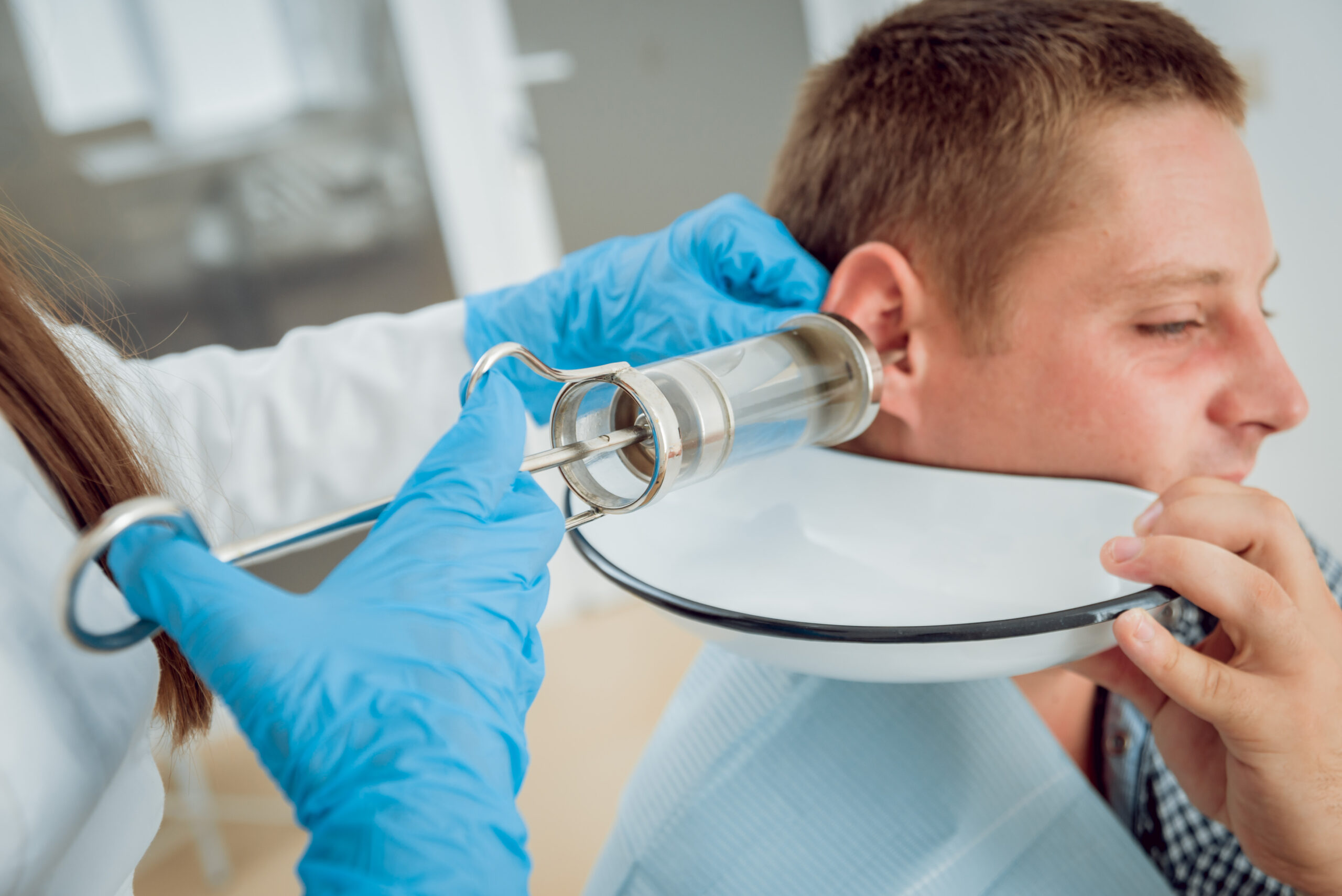Ear irrigation is a procedure performed to remove a build-up of wax in the ear canal. The ear creates wax as a natural way to lubricate the ear canal while also pushing debris out of the channel to protect it from infection. This wax can build up over time, and when it isn’t naturally removed to keep the ear channels clear, it can cause a blockage and restrict hearing.
It is important to remember, however, that this wax is an essential element within our ear, and excessive removal can actually hinder your health and hearing. As such, ear irrigation should only be performed when the symptoms definitely relate to an earwax build-up, including hearing loss, earaches, itching, pain and coughing.
To help you better understand when ear irrigation might be necessary, our specialists at Team Medical Supplies have compiled some information about when you should perform the procedure.
When should you perform ear irrigation?
The eardrum and canal are highly sensitive, so earwax build-up can damage the ear over time, which is why build-up should be removed when there is an excess. While ear irrigation is a safe way to remove excess earwax, there are simpler and less intrusive ways to extract wax that professionals should try first.
Ear drops or olive oil are an ideal first step for excess earwax removal. These drops soften the wax that has become firm, stopping it from becoming dislodged and leaving the ear. When these drops are used over a few days to a week, the wax may become soft enough that it falls out of the ear.
In many instances, though, drops won’t be effective in softening and assisting in removing wax. This is when ear irrigation should be performed because it is a more effective method of flushing wax build-up out of the ear. At this stage, the wax should be softer and more susceptible to irrigation, and the procedure will work more efficiently.
What is the ear irrigation process?
Before you begin the procedure, you can diagnose whether the patient has excess earwax by using an otoscope to inspect the ear canal. Be sure to inspect that there isn’t something more serious occurring, such as a foreign object inside the ear or any perforations in the ear drum.
When the patient has been assessed as needing ear irrigation, doctors and nurses can follow straightforward steps to conduct the irrigation successfully by using a syringe and accessories to insert either water or a saline mixture into the device.
They will then follow this procedure:
- Place a water capture device, like a container, under the ear.
- Place the syringe into the ear, positioning it upwards and towards the back of the ear while gently pulling the ear up and backwards to expand the ear channel.
- Press the bulb of the syringe softly to allow the liquid to enter the ear. There should be no pain or pressure when the water enters the ear.
- The water or saline mixture should then flush out of the ear, taking excess earwax with it on the way out.
- You may need to repeat the procedure four to five times to remove enough earwax. If the process isn’t working effectively and you haven’t achieved enough removal after five times, you should stop and identify other options.
- Once complete, dry the ear using a paper or cloth towel.
In Need of New Ear Irrigation Equipment? Shop Now with Team Medical Supplies
Team Medical Supplies have a comprehensive range of medical equipment and products, including ear irrigation tools and accessories. For more information on our selection, please feel encouraged to contact us today by calling 1300 22 44 50 or submitting your details via our online enquiry form.

